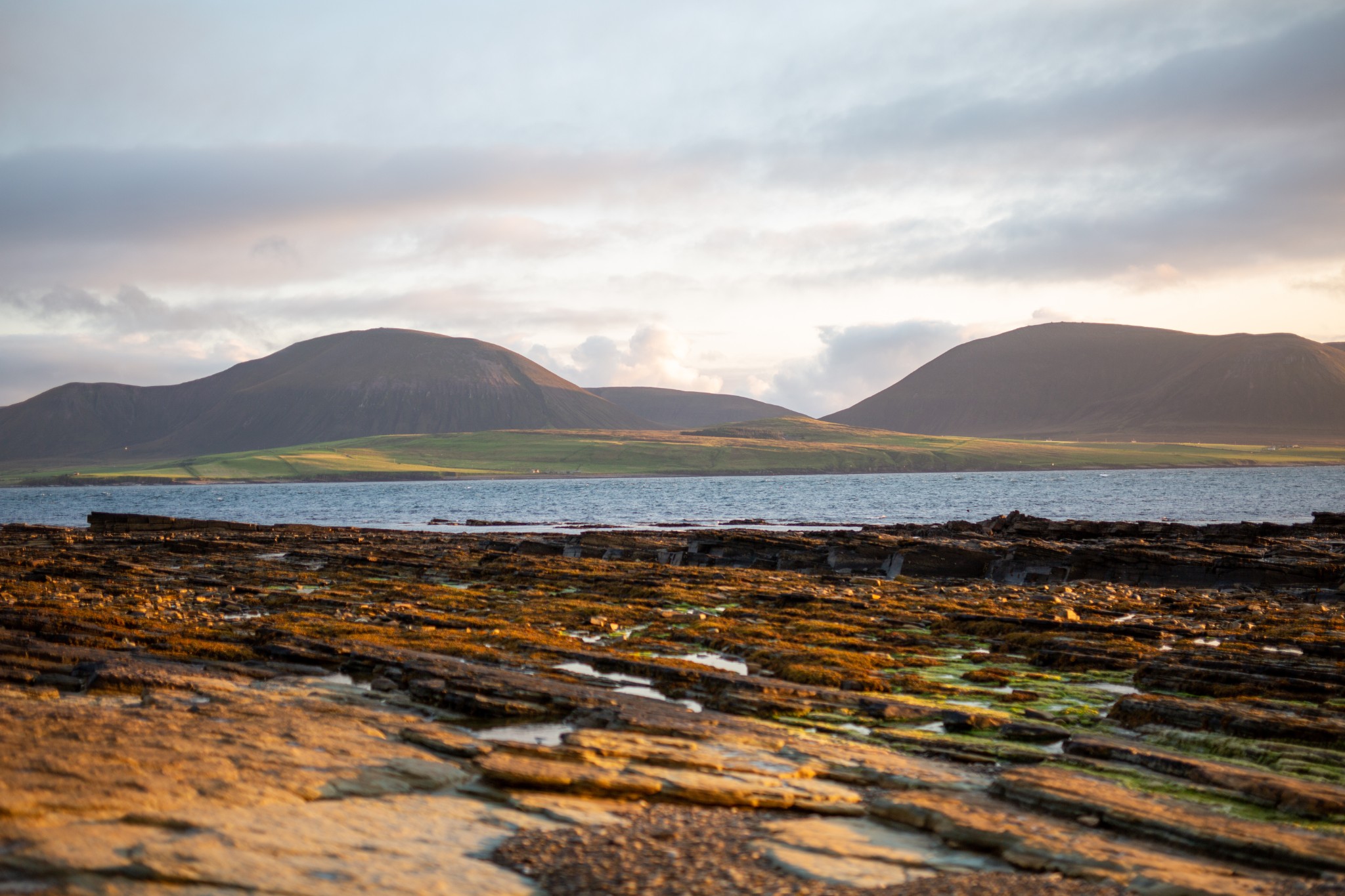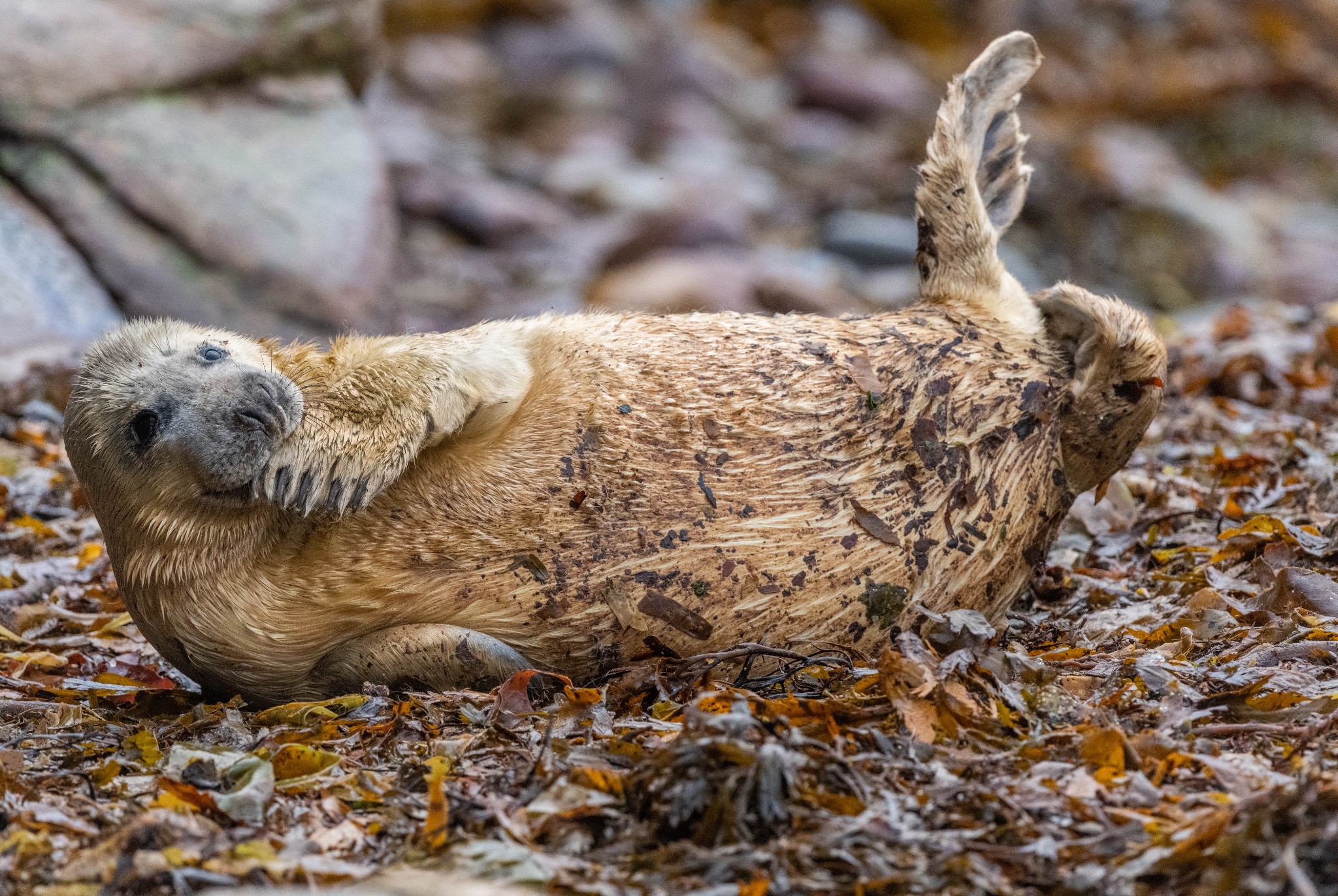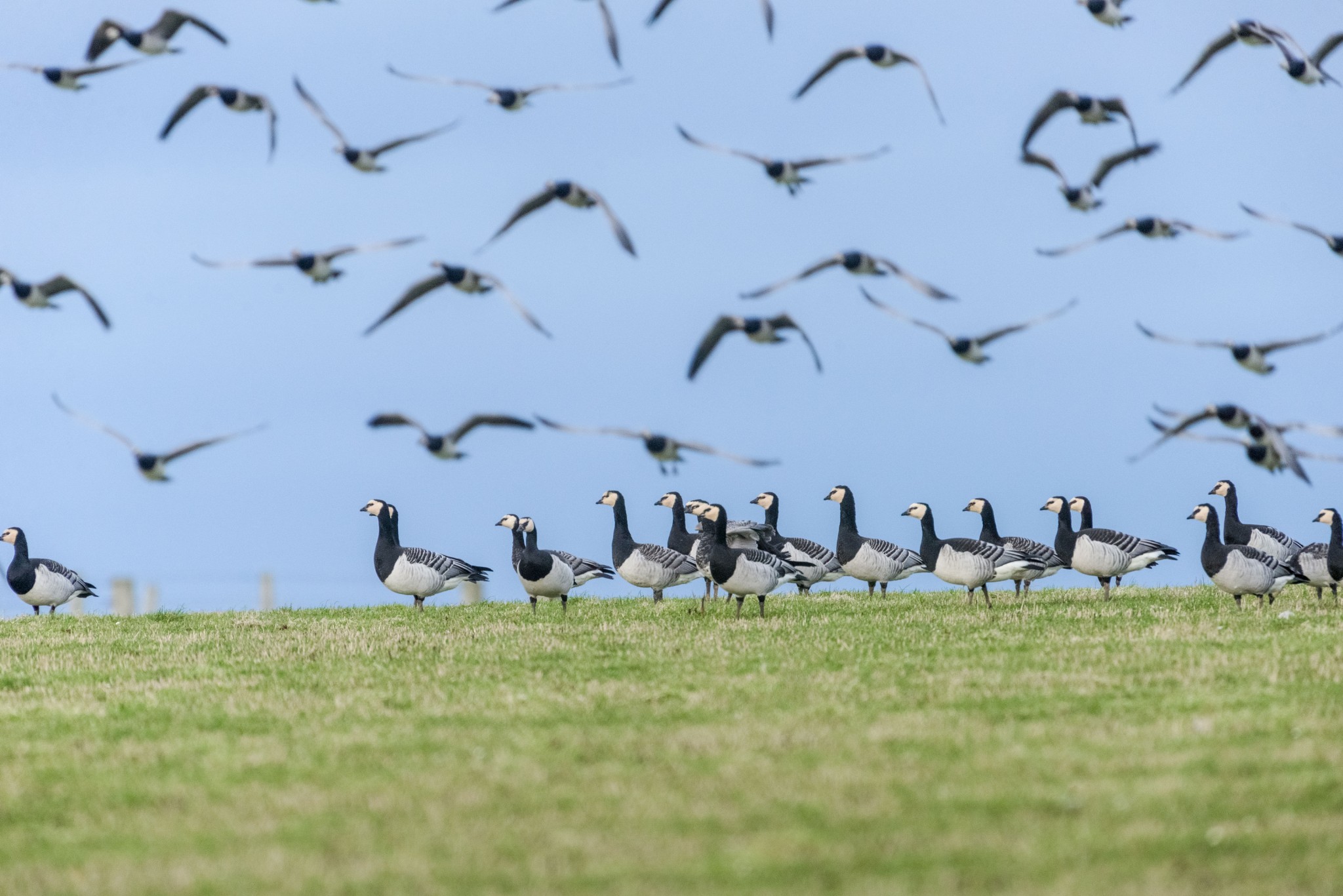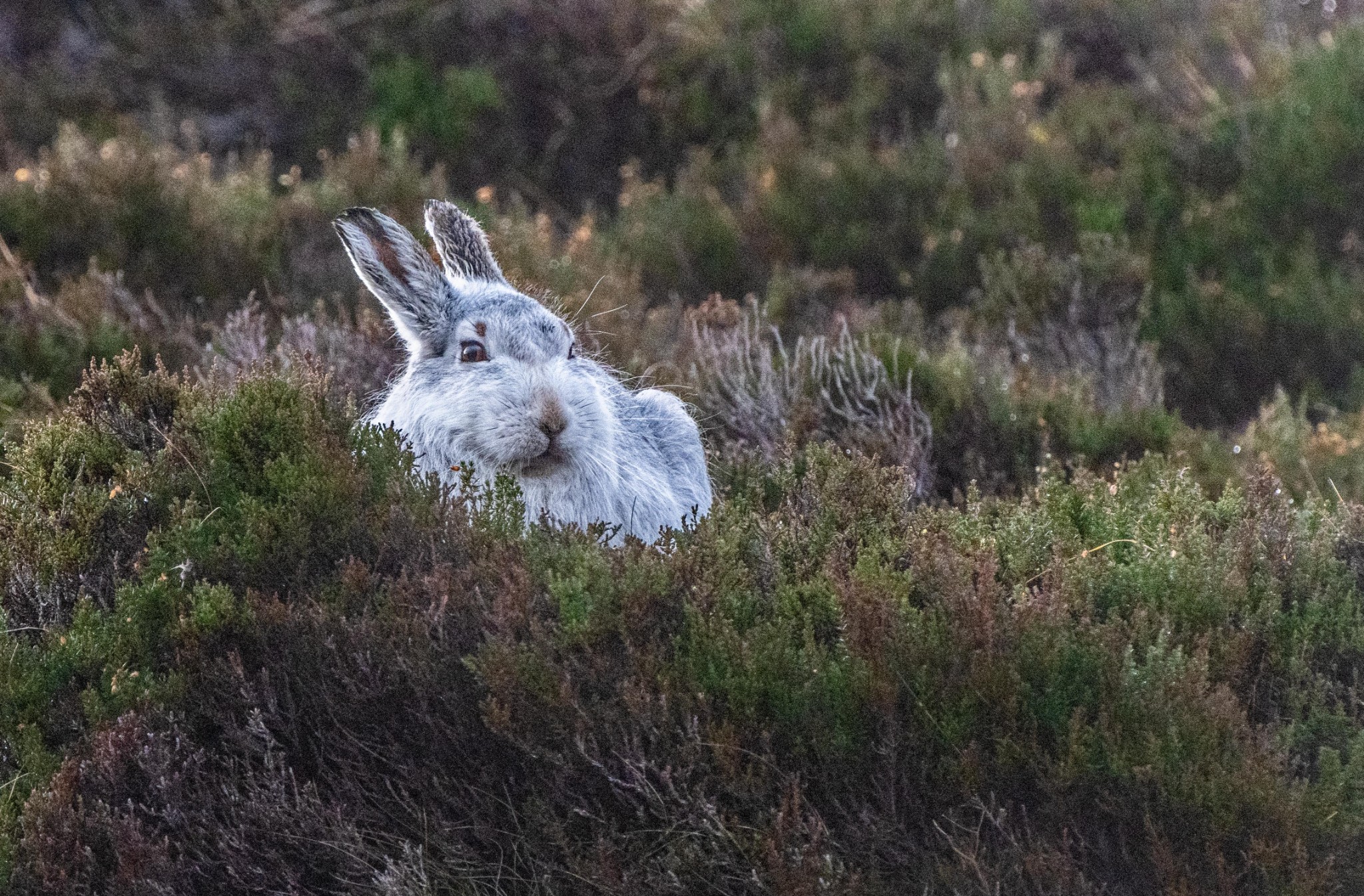With wilder weather and winter on the horizon, it feels like a good time to settle down with a cup of tea and think over what the coming months will bring.
I’m no expert naturalist but I do love poking round outside, finding and learning things. So rather than an official ‘top autumn and winter wildlife’ list, which others will have written better than I can, the following is a tour of some personal favourites, from stormy shores to Orkney’s highest hill.
One of my go-to spots when in Orkney is the beach at Warebeth, where big waves at this time of year can throw up piles and piles of kelp. Some sections asre often as long as I am tall, uprooted from the great seaweed forests that sway offshore. Different ‘trees’ grow there - furbelows, cuvie, dabberlocks – and many other forms of life nestle or hunt amongst the fronds and anchoring holdfasts.
Tossed ashore, the detritus is full of curiosities. The holdfasts themselves are amazing sculptural forms to turn round in your hands. Sea sponges grow in the shelter of their folds. Amongst the tangle you can find the electric flecks of unlucky blue-rayed limpets that were grazing the kelp, and some fronds sparkle in the sun, encrusted with the remains of tiny colonial bryozoans.
In the water might be a great northern diver fishing, or perhaps a flock of long-tailed ducks or eiders. And you may find that you yourself are watched the dark grey eyes of a curious seal.
Grey seals give birth to their pups at this time of year, gathering in colonies called ‘rookeries’ on secluded beaches, with the peak of activity perhaps early November. Thanks to cliff-top paths in South Ronaldsay, you can look down on the mothers with their pale pups without disturbing them.
Moving inland, some of the most evocative sounds the season for me are to be found amongst the fields and lochs. A walk can take you past great flocks of lapwings and curlews, or golden plovers that gleam as they take off in the low winter sun with bell-like, mournful calls.
Feeding alongside are noisy greylag geese, pink-footed geese, even whooper swans. In South Walls barnacle geese bark shrilly amongst themselves during the day, crossing back to uninhabited Switha for the night.
Thousands of wildfowl returning from Iceland and Russia add their voices, from bleeping teal to joyfully whistling wigeon. When a peregrine or hen harrier flies past somewhere like The Loons in the West Mainland or Mill Dam in Shapinsay the medley of calls as all take to the air is magical.
Up on the hillsides, the harriers are starting to draw together to roost at dusk. At first just a few birds glide in as the light fails, dropping silently into the heather, but as winter sets in more will join – perhaps as many as 25 at Durkadale, making it one of the largest roost sites in the UK. Tucked into the hillside with a flask, it’s a special place to watch and listen as the night arrives.
Higher still, here’s a sight I’d love to see again this winter: snow-white hares bounding across the top of Ward Hill in Hoy on a cold, clear day, the whole of the archipelago spread out in the distance.
Spending most of the year camouflaged in a brown coat, these mountain hares start to turn white from around now, with the transformation complete by January. They only live in Hoy and can be spotted from lower paths like the Post Road or from the road through to Rackwick, but if you don’t mind a steep climb then the view even part way up Ward Hill is stunning.
Finally, as I remember the warm cup of tea at hand, it’s good to look forward to things close to home too. Waxwings, which generally reach Orkney around early November, can suddenly pop up right outside the window wherever there are berries and rosehips to be found.
In Stromness, starlings already shoal like fish at dusk before disappearing under the piers and into trees to roost, and every night the trees are full of rooks, their harsh voices fortunately beautiful to me.
This is what Orkney's autum and winter wildlife experiences are made of.
Find out how you can travel to Orkney this winter, and search for your perfect accommodation.



